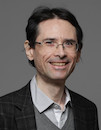Finite Element Method Programming
Data is displayed for academic year: 2023./2024.
Course Description
The finite element method (FEM) offers a powerful general framework for solving ordinary and partial differential equations. It is especially useful in solving engineering problems, for which domain is usually geometrically complex, and materials often have anisotropic and nonlinear properties, because in this case the application of analytical methods is generally not possible. Within this course, weak formulations for various differential equations are derived using variational methods that include the Rayleigh-Ritz method and the method of weighted residuals. The discretization of the obtained integral forms based on finite elements is introduced. The geometry of one-dimensional (linear), two-dimensional (triangular and quadrilateral) and three-dimensional (tetrahedral, hexahedral, and other) finite elements is analytically defined, and the transformation of the geometry of reference finite elements into real finite elements is considered. The shape functions and their derivatives in finite elements are constructed and the choice of the weighting functions is considered. The approximation of integral forms in finite elements, rounding error in finite elements and the procedure of numerical integration are analysed. Local and global matrices of the obtained systems of equations are formed and the properties of the obtained matrices such as symmetry and density are considered. Direct and iterative algorithms suitable for solving the obtained matrix equations are introduced. Nonlinear problems are considered and strategies for solving them are analysed, and the Newton-Raphson method and the incremental method are introduced. Students will be introduced to the programming techniques required for the computer implementation of the finite element method and will model various engineering problems using the finite element method in appropriate programming environments.
Study Programmes
University graduate
[FER3-HR] Audio Technologies and Electroacoustics - profile
Elective Courses
(2. semester)
Elective Courses of the Profile
(2. semester)
[FER3-HR] Communication and Space Technologies - profile
Elective Courses
(2. semester)
[FER3-HR] Computational Modelling in Engineering - profile
Elective Courses
(2. semester)
Elective Courses of the Profile
(2. semester)
[FER3-HR] Computer Engineering - profile
Elective Courses
(2. semester)
[FER3-HR] Computer Science - profile
Elective Courses
(2. semester)
[FER3-HR] Control Systems and Robotics - profile
Elective Courses
(2. semester)
[FER3-HR] Data Science - profile
Elective Courses
(2. semester)
[FER3-HR] Electrical Power Engineering - profile
Elective Courses
(2. semester)
[FER3-HR] Electric Machines, Drives and Automation - profile
Elective Courses
(2. semester)
[FER3-HR] Electronic and Computer Engineering - profile
Elective Courses
(2. semester)
[FER3-HR] Electronics - profile
Elective Courses
(2. semester)
[FER3-HR] Information and Communication Engineering - profile
Elective Courses
(2. semester)
[FER3-HR] Network Science - profile
Elective Courses
(2. semester)
[FER3-HR] Software Engineering and Information Systems - profile
Elective Courses
(2. semester)
Learning Outcomes
- Explain approximation with finite elements
- Apply various types of elements in the approximation.
- Explain variational formulation of engineering problems
- Explain matrix formulation of the finite element method
- Apply various numerical procedures in the finite element method
- Apply programming techniques for the finite element method
Forms of Teaching
Lectures
participation in lectures
Seminars and workshopsproject and team work
Independent assignmentsproject and team work
Laboratoryproject and team work
Work with mentorsupport in team work
Grading Method
| Continuous Assessment | Exam | |||||
|---|---|---|---|---|---|---|
| Type | Threshold | Percent of Grade | Threshold | Percent of Grade | ||
| Seminar/Project | 0 % | 30 % | 0 % | 30 % | ||
| 2. Mid Term Exam: Written | 0 % | 30 % | 0 % | |||
| Final Exam: Written | 0 % | 30 % | ||||
| Final Exam: Oral | 10 % | |||||
| Exam: Written | 0 % | 60 % | ||||
| Exam: Oral | 10 % | |||||
Week by Week Schedule
- Variational methods
- Variational Formulation of the Elliptic Linear Model Problem
- The Finite Elements in One-dimensional Space; Linear Finite Elements; Interpolation Operator and Interpolation Error
- The Finite Elements in Two-dimensional Space; Triangulation of the Domain; The Finite Element Space; Lagrange Finite Elements
- Discretization of weak formulation; Numerical integration
- Formation of local matrix in a finite element; Assembling global matrices over a problem domain
- Analysis of the obtained matrix equations: symmetry and density of matrices; Direct and iterative methods for solving matrix equations: numerical stability and convergence
- Midterm exam
- The Finite Elements in Three-dimensional Space
- Convergence of Conforming Methods
- Finite Element Method for Unsteady Problems: On the Weak formulation; Semi-Discretization by Finite Elements; Temporal Discretization; Error Control
- Finite Element Method for Unsteady Problems: On the Weak formulation; Semi-Discretization by Finite Elements; Temporal Discretization; Error Control
- Nonlinear Problems and Systems
- Nonlinear Problems and Systems
- Final exam
Literature
For students
General
ID 222724
Summer semester
5 ECTS
L1 English Level
L2 e-Learning
30 Lectures
0 Seminar
0 Exercises
13 Laboratory exercises
0 Project laboratory
0 Physical education excercises
Grading System
86 Excellent
74 Very Good
62 Good
50 Sufficient


 Pristupačnost
Pristupačnost

